15+ Best Programmatic Advertising Platforms In 2024
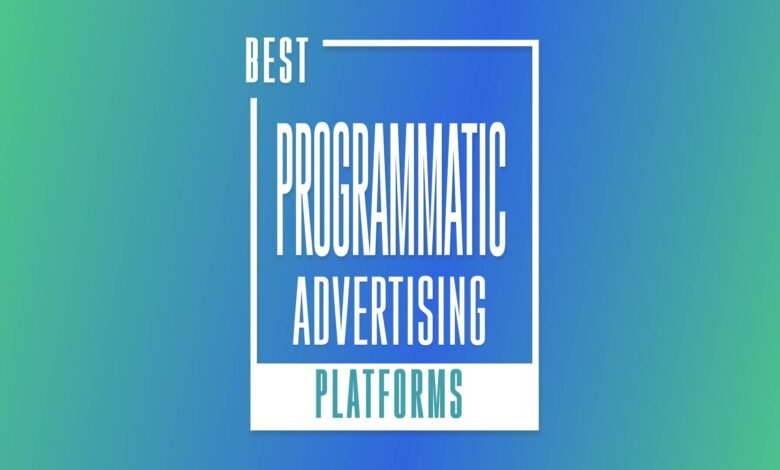
Platforms for programmatic advertising offer a real-time market for buying and selling ad space. They serve as a conduit between the millions of publishers and the advertisers wishing to strategically put adverts online. To make all of this work, you need some strong software running in the background. Programmatic advertising platforms have a role in this.
Demand-side platforms, supply-side platforms, ad exchanges, and data management platforms are the four divisions of platform types. By gathering data and providing it to the ad exchanges, the supply-side platforms perform work for the publishers.
The demand-side platforms that work for the advertisers are then provided with this information by the ad exchanges, which results in an auction for each ad impression.
You need some powerful software running in the background to make all of this happen. Platforms for programmatic advertising play a part in this. The four divisions of platform types are demand-side platforms, supply-side platforms, ad exchanges, and data management platforms.
The supply-side platforms do the publishers’ work by gathering data and sending it to the ad exchanges. The ad exchanges then offer this information to the demand-side platforms that serve the advertisers, resulting in an auction for each ad impression.
What Does Programmatic Advertising Platform Mean?
The automatic purchase and sale of digital ad space is known as programmatic advertising. Ordering, putting up, and reporting on ads all had to be done manually before programmatic advertising. Programmatic advertising streamlines the procedure, increasing its effectiveness and efficiency.
The automatic purchase and sale of digital ad space is known as programmatic advertising. Ordering, putting up, and reporting on ads all had to be done manually before programmatic advertising.
Programmatic advertising streamlines the procedure, increasing its effectiveness and efficiency. Programmatic platforms that have grown their ad inventory and database have made it possible to access any formats and channels.
One approach for companies/enterprises to promote on digital screens is through programmatic advertising. Digital advertising was previously purchased and sold manually, which was an expensive and unreliable method.
Publishers who have enabled native advertising on their websites have helped programmatic advertising advance to new heights. Publishers primarily use programmatic native advertising since it can be less impacted by ad blockers than other ad formats and platforms.
How Does Programmatic Advertising Platform Work?
Programmatic advertisements assist in bridging the gap between publishers—those with websites that have ad space (or “ad inventory”) to sell—and advertisers—those looking to purchase that ad space to advance their brands.An advertiser contacts their programmatic ad agency or trading desk when they want to start a digital campaign to market their good or service.
To achieve the campaign’s objective, the agency automates the acquisition of ad impressions using a demand-side platform (DSP). With the use of a DSP, marketers and their agencies are able to buy ad inventory from several publishers.
A data management platform (DMP), which handles audience data, is used by the DSP to guarantee that the advertisements are directed at the appropriate audience. By taking into account a number of variables, including location, demographics, user behaviour, and online activity, this data is used to target the appropriate audience.
A publisher’s website will submit an ad request to the supply-side platform whenever someone who is part of the advertiser’s target audience visits it (SSP). A publisher sells advertisements using an SSP in order to increase the value of each impression for the publisher.
Benefits of Programmatic Advertising Platforms:
- improved ad effectiveness
- decreased costs overall for advertising
- Possibility of real-time optimization and audience targeting
- Greater ROI
- Utilizing original data sets from both first- and third-party sources
- constructing powerful cross-device campaigns
- acquiring more data insights to comprehend customer
- Scaling success
- accelerating campaign launch
- advanced skills for audience targeting
- an expanded audience
- automated duties for advertising
- flexible spending limits
- Real-time campaign results that can be measured
- more successful marketing initiatives
- an increased return on investment (ROI)
Best Programmatic Advertising Platforms In 2024:
Here is the list of Best Programmatic Advertising Platforms for Affiliates and Advertising to join in 2023 and 2024:
- Adform
- AdRoll
- Display and Video 360 by Google
- The Trade Desk
- Xandr
- Adobe Advertising Cloud
- MediaMath
- Criteo
- PubMatic
- SmartyAds
- Smaato
- OpenX
- Adbutler (SSP)
- Lotame
- theTradeDesk
1. Adform:

Adform is a Danish demand side platform that was developed for modern marketing. The DSP makes use of Adform flow, an enterprise platform with a scalable, adaptable, and open architecture, to provide seamless campaign cycle management.
The technology behind the concept attempts to enhance human-machine interaction while supplying augmented intelligence to improve client firms’ performance.
The only international, independent, and completely integrated advertising platform designed for contemporary marketing is Adform. Its proprietary enterprise solution, Adform Flow, uses a scalable, modular, and open architecture to offer a superior user experience and enable seamless control of the whole campaign life cycle.
Pros:
- a variety of rewards, including bonuses, dinner for two, crazy-fun random events, and formal rewards.
- When a coworker lends you a hand and you think they deserve more appreciation than a simple “thank you,” you can write a Kudo for them. Based on the nature of what they did, they will then receive a modest gift from the firm.
- All teams receive a stipend for team building activities, which they can use to plan an out-of-office gathering that can include anything from supper to hot air ballooning to a vacation spot like Mallorca.
- Off-sites – Each Adform team has the option to plan an off-site event,
2. AdRoll:
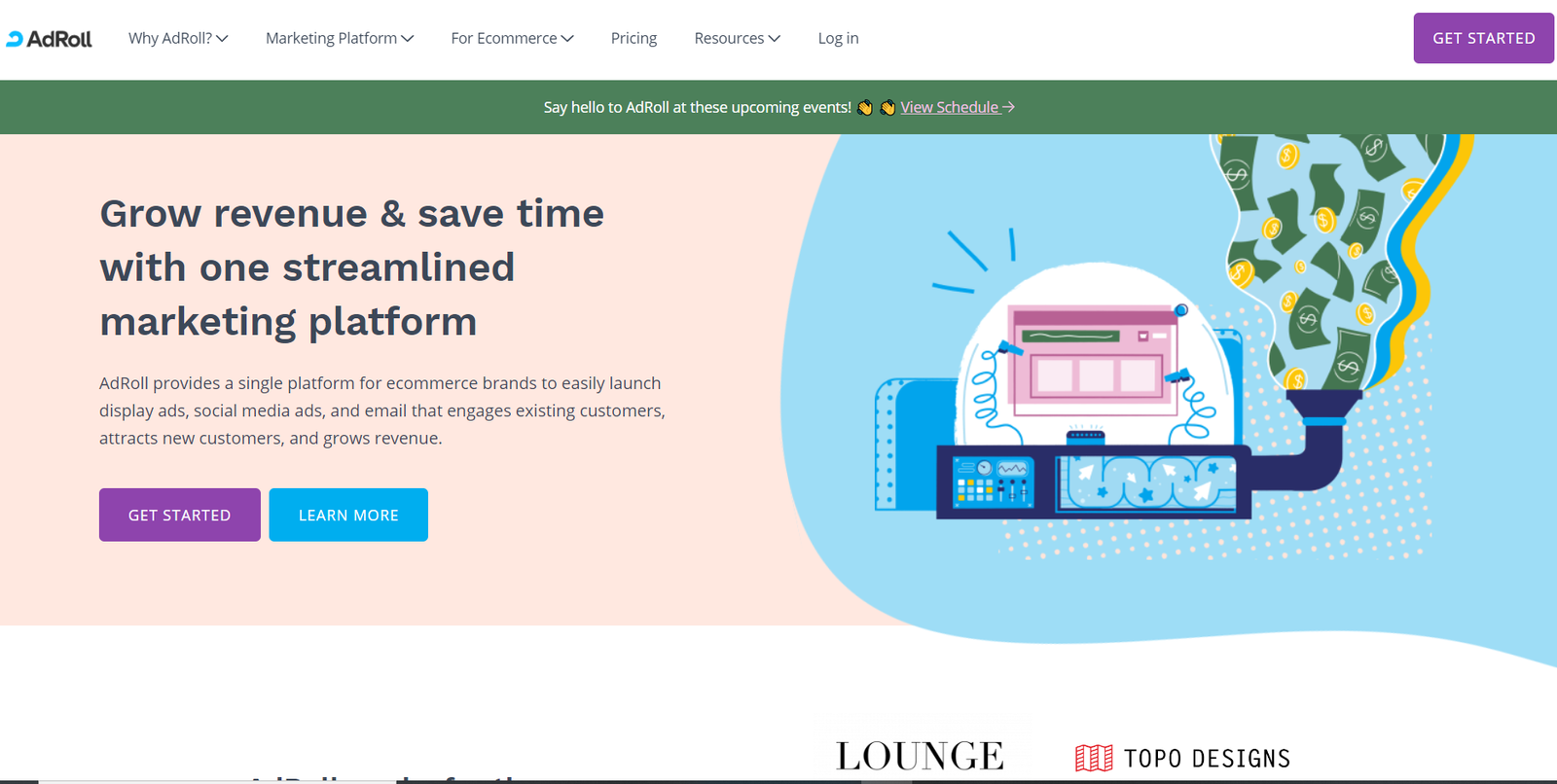 eComerce companies can simply run display adverts, social network ads, and email campaigns with AdRroll’s centralized platform. They distinguish themselves by offering One Forum, One Purchase, and One Login, which translates to Single Platform, Single Purchase, and One Login.
eComerce companies can simply run display adverts, social network ads, and email campaigns with AdRroll’s centralized platform. They distinguish themselves by offering One Forum, One Purchase, and One Login, which translates to Single Platform, Single Purchase, and One Login.
This enables them to use a standardized marketing DSP platform to enhance their profits while also saving time. For ecommerce firms, AdRoll offers a single platform that makes it simple to deploy display advertisements, social network ads, and email campaigns that engage current consumers, draw in new ones, and increase revenue.
Pros:
- Simple to use
- Set up
- friendly to users
- Implements the AdRoll Pixel automatically on all pages of your online store.
- Sync Product Feed: Produces a Product Deed so that you can run Dynamic Ads without paying extra.
- Dynamic Ads to Run: Access effective dynamic ads
- Enable dynamic conversion and ROAS tracking for improved conversion tracking.
- Automatic construction of Conversion Segment: Utilize an automatically produced Conversion Segment that returns precise conversion figures to track the number of sales and amount of income generated by the AdRoll campaign.
- Create important audiences automatically: viewed the item, Add item to cart, Accessed Cart, Checkout (Conversion)
3. Display and Video 360 by Google:

Programmatic advertising is bought and managed using a Google market technology platform called DV 360, which is short for Display and Video 360. Through DV360, advertisers may connect with a wide range of media to reach the appropriate audience at the right pricing.
DV360 offers a wide range of Publishers selling ad spots thanks to its direct ties to several ad networks and exchanges, including Google Ad Exchange. DV360 stands out for its scalability, audience segmentation, and end-to-end digital strategy.
Pros:
- Omni-Channel Optimizations
- Automated Bidding,
- Centralized Operations, etc.
- Reporting in real-time.
- Ad copy evaluation.
3. The Trade Desk:

It is a platform for advertising created to reach audiences everywhere. The Trade Desk helps you grow your brand everywhere by using the data to promote it. To expand your audience, you may use the Open Internet to compare performance in a transparent and fair manner across a wide range of websites, applications, podcasts, and other media.
Thanks to the advent of the Open Internet, The Trade Desk is now more powerful, data-driven, and ready for advertising straight out of the gate. An American international technology firm called The Trade Desk (stylized as the Trade Desk) specializes in real-time programmatic marketing automation tools, products, and services that are intended to tailor the delivery of digital content to individual users.
Pros:
- Third-party
- display advertising
- Control multiple
5. Xandr:
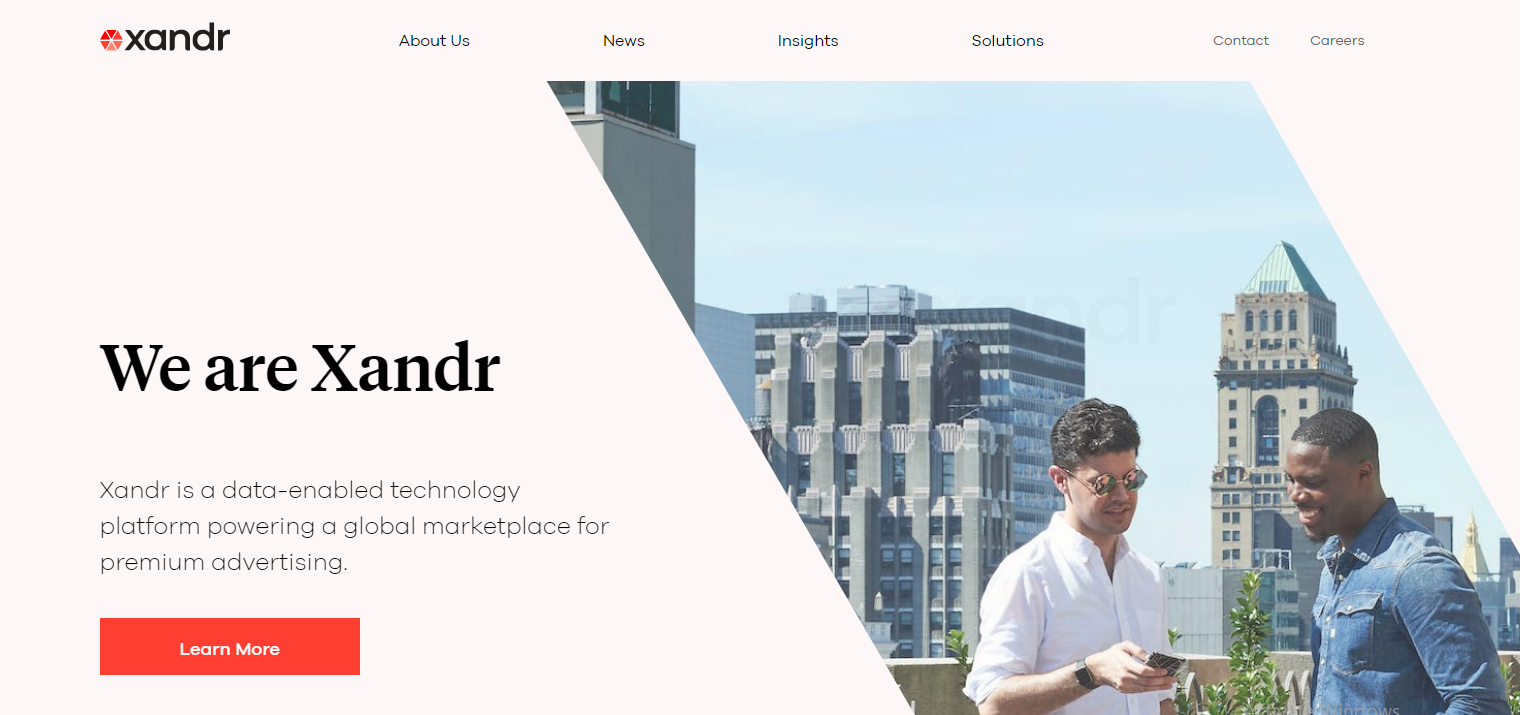
Xandr is a platform for data-enabled technology and a global market for premium advertising. With tailored services, greater access to demand, greater availability to supply, and improved buying strategies for advertisers, Xandr is widely considered as the leading pioneer at the intersection of digital and TV.
The Xandr Marketplace has a sizeable global presence with 6.7 billion daily views, 193,000+ brands, 80+ global DSP interfaces, 1550+ connected publishers, 175+ global SSP connections, and 45+ global data supplier relationships.
The AT&T web advertising platform is called Xandr. The company offers a premium platform for advertisers and publishers wishing to reach niche audiences at scale in brand-safe settings through a strong, unified platform by using the multigenerational legacy of AT&T.
Pros:
- Data-Driven Yield Optimization,
- Strategic Inventory Management,
- and Demand Advantage
6. Adobe Advertising Cloud:

Adobe is a global commercial juggernaut when it comes to media. And what exactly is advertising if mainstream media isn’t presented in a variety of formats?
Media and programming come together on a platform called Adobe Advertising Cloud. The automation and unification of all media, displays, data, and creative have been scaled up by this network, which is the only one that is independently owned and run.
Customers may plan, purchase, manage, monitor, analyze, and optimize display, video, native, mobile, audio, Search, and connected TV advertising campaigns using Adobe Advertising Cloud, a cross-channel platform. Customers can also use dynamic ad templates to deliver relevant ad content to end users.
Pros:
- Social media
- Management campaign
- several outlets
7. MediaMath:
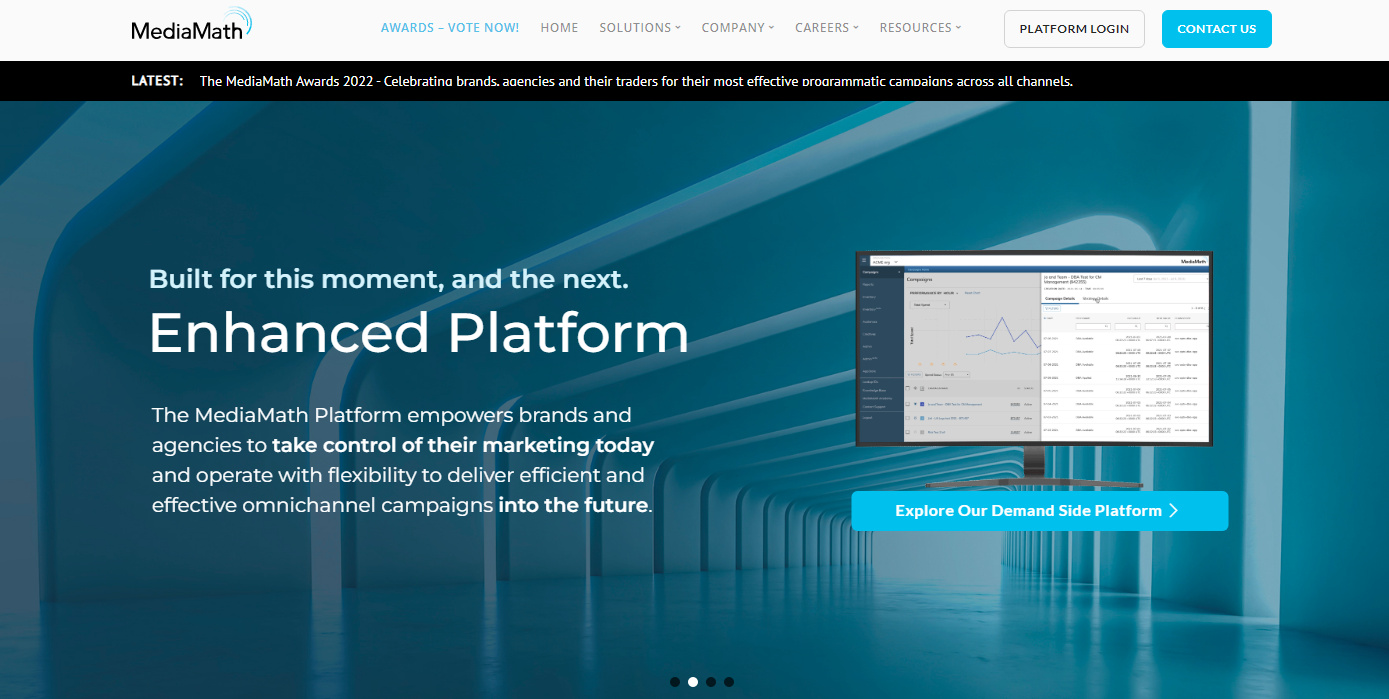
MediaMath is one such demand-supply platform for advertisers built for now and tomorrow. It provides total marketing control while also enabling marketers to operate without restriction and still create effective Omni channel campaigns.
The programmatic advertising platform offers an upgraded user experience, a modernized Ecosystem, and also an agnostic approach that accepts any ID system prior to the deprecation of third-party cookies. We get excellent outcomes through strong ad tech partnerships and a desire to learn more about emerging technologies.
We assist more than 3,500 marketers in finding solutions to challenging marketing issues so they may strengthen client relationships across screens and internationally.
Pros:
- Out of all the programmatic display providers we work with, MediaMath’s tagging procedure is the simplest.
- For campaign targeting, MediaMath offers a wide range of audience options.
- We have had positive interactions with MediaMath’s customer service.
8. Criteo:
 To create, expand, and activate first-party audiences, the Commercial Media Platform collaborates with a supply-side platform named Criteo. The platform’s AI Engine supports predictive bidding, product information, creative optimization, and look-alike audiences.
To create, expand, and activate first-party audiences, the Commercial Media Platform collaborates with a supply-side platform named Criteo. The platform’s AI Engine supports predictive bidding, product information, creative optimization, and look-alike audiences.
The website gives publishers and marketers complete control, transparency, and shopper graphs to help them better understand their target market.
It also provides a simple-to-use advertising platform that can be rapidly set up.The platform boasts 685 million active daily users, 35 billion daily browse and purchase events active in 96 countries, hundreds of publishers with wide distribution, and premium inventory on the open Internet.
Pros:
- Simple to use
- friendly to users
- Set up
9. PubMatic:

PubMatic is a different platform that offers the future supply chain for digital advertising and maximizes customer value. In order to enable scalable and flexible innovation in their customer-specific solution, they deploy customized infrastructure.
PubMatic’s unbiased approach offers inventory, information, and analytics to drive outcomes and allow control, with an emphasis on transparency and building solutions that address the most significant concerns affecting the sector. Each day, the clock processes 3.3 petabytes of data and receives 1.2 trillion bids from advertisers.
Pros:
- Numerous CTV options
- Lots of stock in Tier 1 nations
- excellent support group
10. SmartyAds:
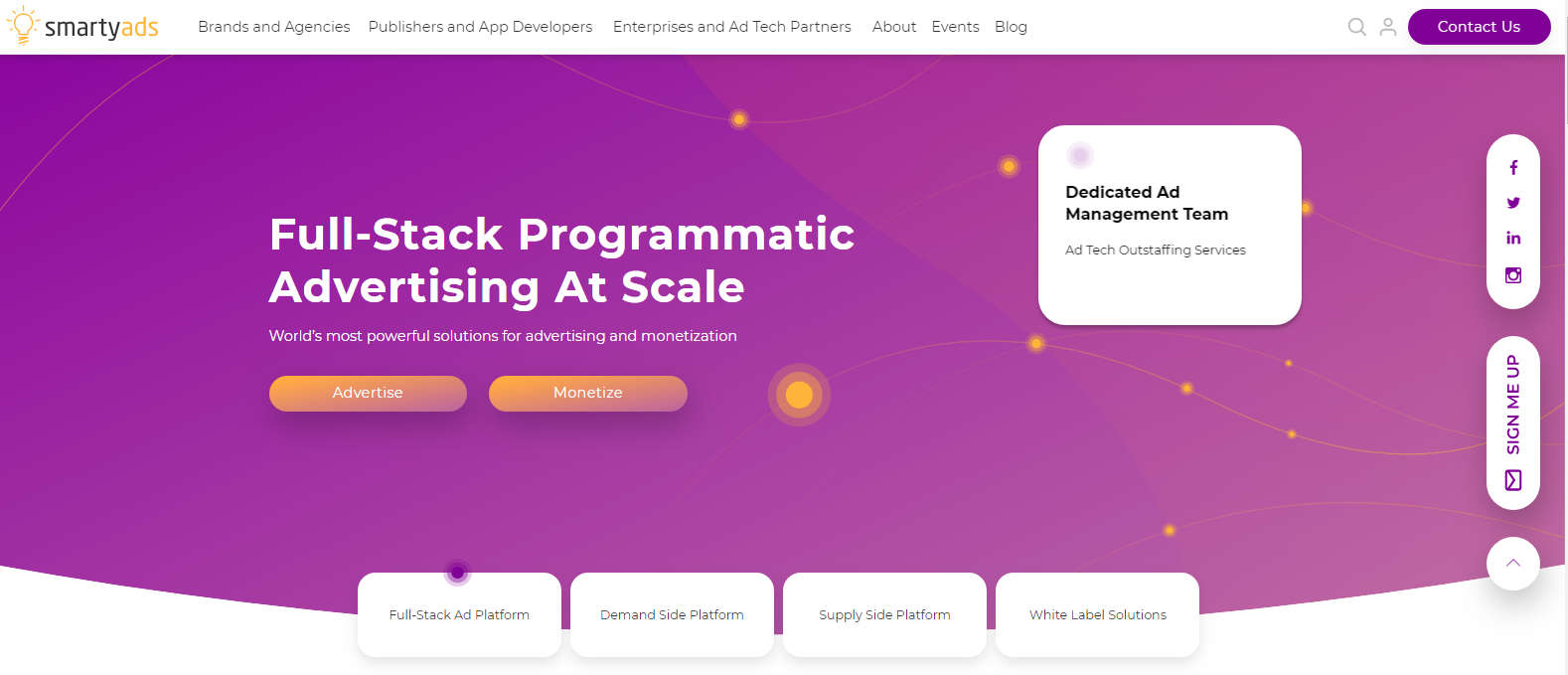 By streamlining the process, giving transactions priority, and achieving desired goals, SmartyAds—the Full Stack Programmatic Advertising Ad Measure for Advertisers and Publishers—accelerates business growth. They offer a unique White Label Solution framework for media purchasing, selling, and data activation.
By streamlining the process, giving transactions priority, and achieving desired goals, SmartyAds—the Full Stack Programmatic Advertising Ad Measure for Advertisers and Publishers—accelerates business growth. They offer a unique White Label Solution framework for media purchasing, selling, and data activation.
With SpringServe, Criteo, InMobi, Cheetah Mobile, Google, and Opera, they have collaborative ventures. The Salesforce blog, Forbes, Inc., and Entrepreneur have all featured them for their outstanding accomplishment in the industry.
Pros:
- Simple to use
- a helpful interface
11. Smaato:
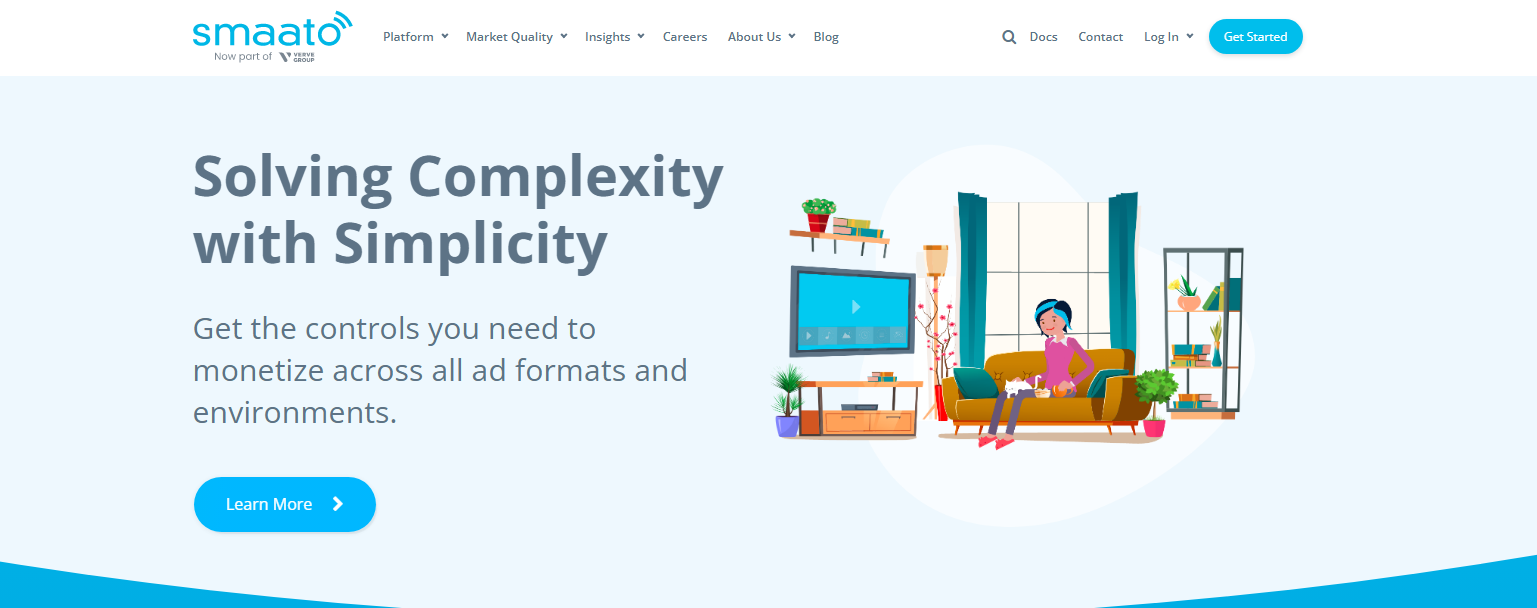
Smaato, a digital platform for online advertising, offers monetization solutions and open ad servers. It involves viewers all over the world by collaborating premium marketers with top-notch publishers. The platform receives a stunning 1.8T ad requests, 1.3B unique users, 150B video ad requests, and 470M unique viewers per month.
The Smaato gives publishers and advertisers the option to create their own with no ad serving price. It uses an Omni Channel strategy to support all devices, settings, and ad formats with powerful automated technology and human talents.
Pros:
- decent support group
- Consumer assistance
- quick to react
12. OpenX:
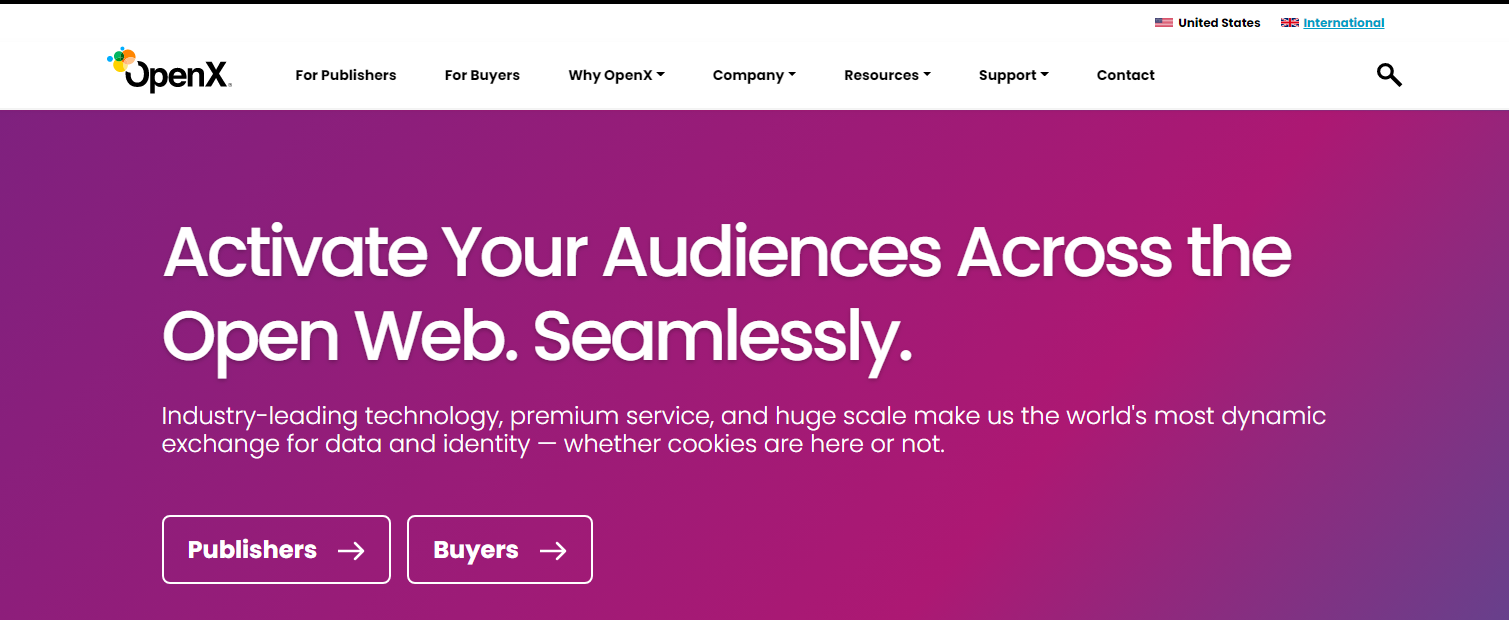
OpenX is a wholly cloud-based exchange with the best tech stack on the market and market-leading innovations. They support audience creation, optimization, and bid guidance while covering all device types and formats at scale.
Regardless of whether you utilize their third-party data or your own first-party data, you can use OpenX to identify, reach, and engage users at every level.
Pros:
- excellent client service
- excellent client service
13. Adbutler (SSP):
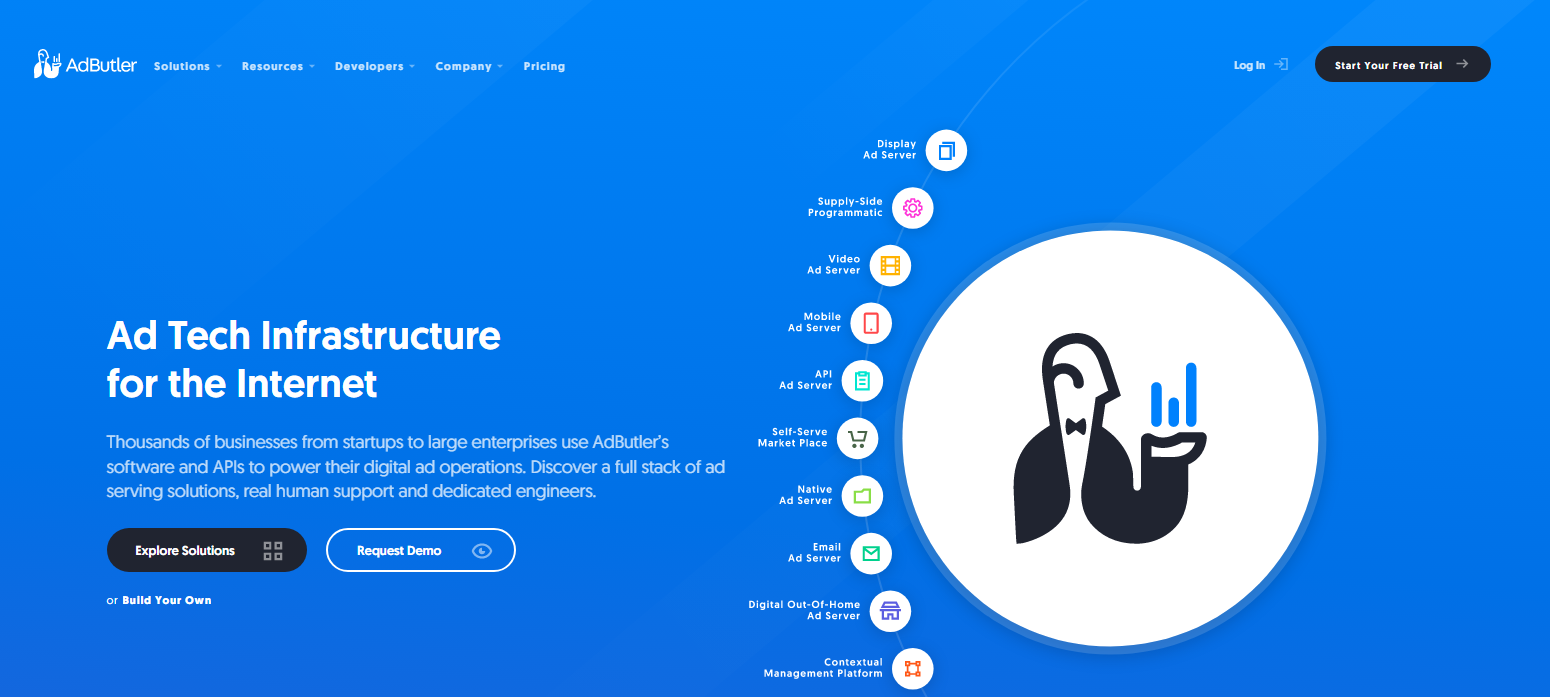
The primary objective of an SSP is to support advertisers and publishers (website owners) in the selling of advertising space on their websites, mobile applications, and other digital properties.
The process of determining the optimal price for each ad space and selling it to the highest bidder is automated by these platforms. SSPs work with ad networks to connect publishers to a bigger pool of prospective clients.
Pros:
- Real-time analytics without lag
- quickest ad server in the world
- Managing campaigns is simple
- sophisticated deep targeting
- Fast, asynchronous server-to-server or client-side ad calls
- accepts all ad formats
- easy forecasting and inventory management
14. Lotame:
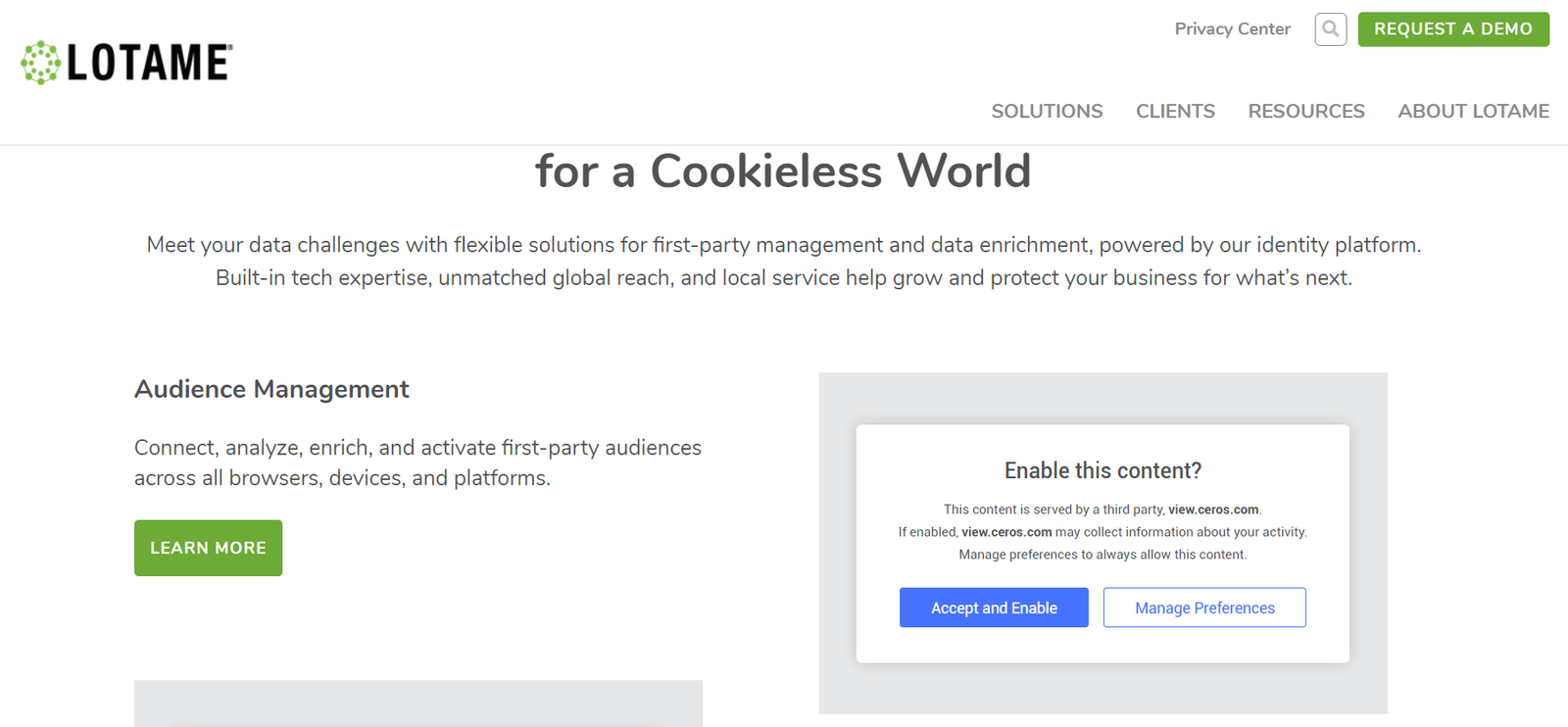
Lotame’s adaptable data solutions guarantee future connectivity and improve performance across all displays. Advertisers, publishers, as well as platforms, rely on its cutting-edge and interoperable solutions, powered by the identity platform, for audience onboarding, audience enrichment, and audience targeting.
Pros:
- Audience groups
- intuitive user interface
15. TheTradeDesk:
 With the use of a DMP from theTradeDesk, advertisers and publishers can collect, arrange, and activate their information in a single spot.
With the use of a DMP from theTradeDesk, advertisers and publishers can collect, arrange, and activate their information in a single spot.
One of its most popular capabilities is lookalike modeling, which helps you to discover new audiences using information from your current viewers. Additionally, it gives users access to a market for data where they can find reliable customers from data producers.
TheTradeDesk is expanding aggressively in the DMP sector. For instance, theTradeDesk and TikTok just declared a connection. This collaboration will increase TikTok’s ability to advertise more widely and draw more businesses to the platform.
Pros:
- Third-party display advertising Control multiple
Also Read:
15+ Best Affiliate Marketing Agencies in 2024
10+ Best Branding Trends For 2024
Conclusion:
We can confidently conclude from our examination of a range of Demand Side Platforms, Supply Side Platforms, and Ad Exchanges that they help us reach our target market and provide them with what they value most—your product.
The most effective way to buy advertisements is through programmatic, which uses data-driven audience targeting. It saves time, minimizes wasted ad expenditure, offers endless inventory, and optimizes campaign frequency compared to manual or direct ad buying techniques.






